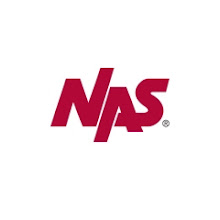Many employers in return can count on employees’ feeling less connected to the organization, and being less productive. But even in a crisis where 2.6 million jobs were lost last year, there are organizations that will seize the opportunity and achieve a significant competitive advantage by continuing to build and sustain employer brand strength.
In an outstanding webinar delivered for ERE this week, Frank Lane, author of Killer Brands, offered this definition:
A Killer Brand exists when an entity derives a disproportionate amount of success in its category because of a compelling and differentiated expectation that comes to be associated with its name.
A quality employment brand strategy proactively and appropriately manages expectations, reputation, and image, all toward what you’re trying to do — attract and engage a skilled and productive workforce, which is the most critical driver of business success. Even in today’s environment, “A” players will exercise careful choices about where they come to work and what they want out of the employment relationship. Many will also be preparing for change as that market recovery presents new opportunities. Every category-leading “brand” is focused on two primary channels to grow share:
- The attraction of new customers
- The continued loyalty of existing customers
While attraction/recruiting needs have certainly lessened (although in some sectors critical skills are still in high demand) the brand loyalty of existing employees will certainly be an issue into the foreseeable future. And while many people may be thankful or merely satisfied to have a job today, that level of brand equity will not necessarily translate into productivity, engagement, and retention tomorrow. That’s why forward-thinking organizations will use this down cycle to prepare and deploy a strategy to grow and sustain a true talent advantage.
And it represents an opportunity to consider what “disproportionate amount of success” your organization derives because of the desire among A-level talent to apply their skills to your business?
In evaluating your organization’s employment brand strength, consider these four primary objectives:
Authenticity
Employment branding is an inside-out strategy, and an ultimate reflection of the day-to-day work experience inside the organization. The job experience needs to be consistent with the expectations, or you’ll have an immediate disconnect. More organizations are working to shore this up, particularly in the assimilation of new talent into the organization, by building highly interactive, high-touch, high-engagement, onboarding experiences over the critical first 12 months of employment.
Some organizations continue to exceed employees’ expectations not just when employees start the job, but over and over again. The ultimate litmus test of brand strength exists inside your organization, among your existing workforce — especially the stars. If they champion the cause internally and extol the virtues of working for your organization externally, home run!
Differentiation
To successfully attract the highest quality, critical skills in a market space and sustain high employee engagement, it has to be clear what gives your organization a competitive advantage. Without very specific differentiation, you will compete to win and keep talent primarily on the basis of compensation. Be very focused about what makes working for your organization different and better.
Compelling
The differentiation must be compelling enough to command attention, motivate change, and drive loyalty. Achieving high levels of authentic, compelling differentiation requires you to carefully analyze the culture, leadership, work experience, and engagement levels in the organization. You’ll also need to understand existing external perceptions — what candidates and potential candidates think of you.
Consistency
To deliver a consistent, quality brand experience, you’ve got to test out different things and measure how they’re working. And you’ve got to find people who’ll spread the word. Smart organizations are proactively building advocacy through employer-brand-ambassador training programs to ensure stakeholder buy-in and broaden awareness across the organization. And organizations are incorporating new tools, technology, and better resources to extend the brand externally, create improved experiences, and validate outcomes through intelligent reporting and data.
Employment branding 2.0 will be increasingly more experience- and relationship-driven as better networked candidates are exposed to more opportunities faster, across an ever-evolving platform of constant communication. Social media will mean employees know a lot more about your company a lot more quickly. Employer branding will need to become more authentic and be driven inside-out from current ambassadors (employees/stakeholders) whose influence impacts talent management across the organization.
Those organizations that are preparing now can widen the gap and yield a significant gain advantage.






1 comment:
Thanks for the post!
Post a Comment